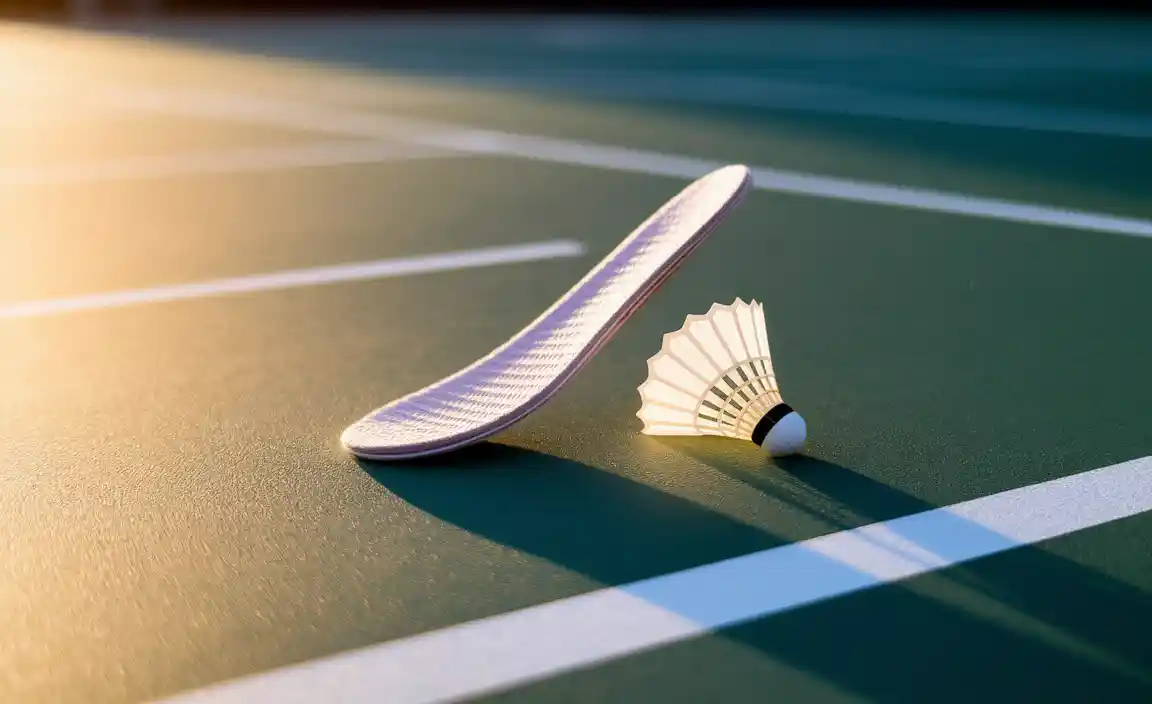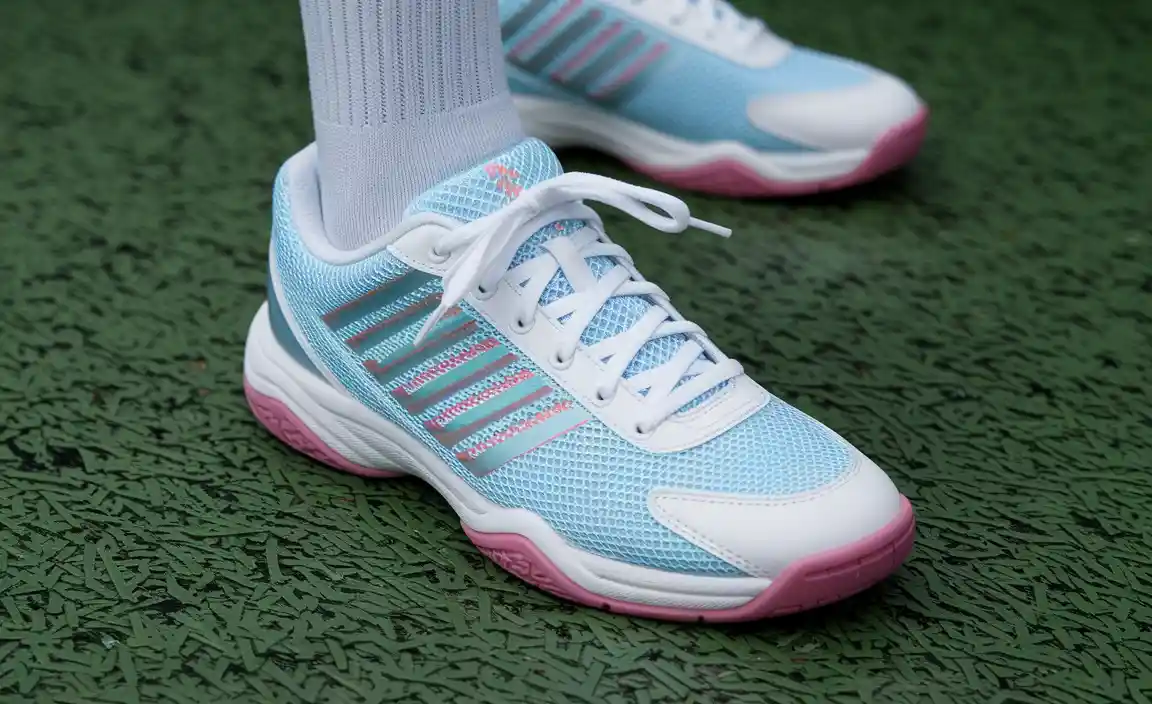Badminton insoles are an unsung hero for players battling the persistent agony of plantar fasciitis. This common yet debilitating condition, characterized by sharp heel pain, can significantly impact your ability to perform on the court, turning quick serves and agile movements into a painful ordeal. Fortunately, the right insoles can offer substantial relief, allowing badminton enthusiasts to regain their footing and rediscover their passion for the game. This article will delve into why specialized badminton insoles are crucial for plantar fasciitis sufferers and explore what makes them the best plantar relief available.

Understanding Plantar Fasciitis in Badminton Players
The anatomy of badminton inherently puts significant stress on the feet. The constant starting, stopping, jumping, and sudden lateral movements required in the sport can overload the plantar fascia – a thick band of tissue that runs along the bottom of your foot, connecting your heel bone to your toes. When this tissue becomes inflamed or irritated, it leads to plantar fasciitis.

Several factors specific to badminton contribute to this condition:
High-Impact Movements: The explosive nature of jumping for smashes and lunging for clears generates considerable force that travels up through the feet.
Rapid Directional Changes: The quick pivots and side-to-side shuffles place immense strain on the arch and heel.
Court Surfaces: While badminton courts are generally less harsh than some other sports surfaces, they still offer limited shock absorption, thus transferring more impact to the feet.
Footwear Limitations: Standard athletic shoes might offer general cushioning, but they often lack the targeted support needed to address the specific biomechanical issues associated with plantar fasciitis in a sport like badminton.
Why Standard Shoe Inserts Fall Short
While many athletic shoes come with basic insoles, these are rarely sufficient for individuals suffering from plantar fasciitis. These generic inserts typically provide only superficial cushioning, lacking the essential features for proper arch support and heel stabilization. They might offer a little immediate comfort, but they do not address the underlying causes of plantar fasciitis, leaving the condition prone to recurrence or worsening.
For badminton players, this means that even with seemingly good shoes, the repetitive stress on the plantar fascia continues unchecked, inevitably leading to pain with every step, every jump, and every sprint across the court.
The Crucial Role of Badminton Insoles for Plantar Fasciitis
This is where specialized insoles for badminton plantar fasciitis come into play. These are not just generic shoe inserts; they are engineered with biomechanical principles in mind, specifically designed to support and protect the feet of athletes engaging in high-impact, agile sports.

Here’s how they offer the best plantar relief:
Superior Arch Support: The most critical feature of effective insoles for plantar fasciitis is robust arch support. They help to distribute pressure more evenly across the foot, reducing the strain on the plantar fascia by preventing excessive flattening of the arch during impact. This acts like a shock absorber for the arch itself.
Targeted Heel Cushioning and Stabilization: Plantar fasciitis pain is most acutely felt in the heel. Good badminton insoles feature enhanced cushioning in the heel cup. This not only absorbs shock but also helps to cradle and stabilize the heel, preventing excessive rolling or tilting that can aggravate the condition.
Metatarsal Support: Some insoles also incorporate support for the metatarsal bones, the long bones in the midfoot. This further helps to spread pressure and alleviate strain across the entire foot.
Pronation Control: For individuals whose plantar fasciitis is exacerbated by overpronation (where the foot rolls inward excessively), specific insoles offer pronation control. They help to guide the foot into a more neutral alignment, reducing unnatural stress on the plantar fascia.
Shock Absorption: Beyond general cushioning, advanced insole materials are designed to absorb and dissipate impact forces more effectively than standard shoe padding. This is vital for the jumping and landing movements inherent in badminton.
Durability and Material: Badminton insoles are constructed from durable materials that can withstand the rigorous demands of the sport without quickly losing their supportive properties. They are designed to maintain their structure and function over time, providing consistent relief.
Choosing the Right Badminton Insoles
When selecting insoles for badminton plantar fasciitis, consider the following:

Arch Height: Your natural arch height is a key factor. High arches may require more cushioning and flexibility, while flat feet might need more rigid support and pronation control.
Severity of Pain: For mild discomfort, an off-the-shelf option might suffice. For severe pain, consulting a podiatrist or physiotherapist for custom orthotics or recommendations for specialized insoles is advisable.
Material and Construction: Look for insoles made from shock-absorbing materials like EVA foam, gel, or cork. Consider the insole’s depth to ensure it fits comfortably in your badminton shoes.
Fit: The insoles should fit snugly into your shoes without causing any pressure points or slippage. Try them on with your badminton socks and shoes if possible.
Ventilation: Badminton is a strenuous sport, so breathable materials can help manage moisture and prevent discomfort.
Integrating Insoles into Your Badminton Routine
Simply inserting a new pair of insoles is a great first step, but for optimal plantar relief, consider integrating them into a broader approach to managing plantar fasciitis:
Proper Warm-up and Cool-down: Always warm up your feet and ankles before playing and perform stretching exercises afterward, focusing on the calf muscles and plantar fascia.
Strengthening Exercises: Regular exercises to strengthen the muscles of the foot and lower leg can improve support and reduce strain.
Appropriate Footwear: Ensure your badminton shoes fit well and are not overly worn. Even with the best insoles, worn-out shoes can undermine their effectiveness.
* Rest and Recovery: Listen to your body. If you experience increased pain, take a break from playing or reduce the intensity of your training.
Conclusion
For badminton players suffering from plantar fasciitis, the quest for enduring court performance often hinges on finding the right support. Specialized badminton insoles offer precisely that. By providing superior arch support, enhanced heel cushioning and stabilization, and effective shock absorption, these insoles are the most effective readily available solution for combating the pain and limitations of plantar fasciitis. Investing in the best plantar relief through dedicated insoles for badminton plantar fasciitis isn’t just about alleviating pain; it’s about reclaiming your agility, extending your playing time, and ensuring your love for badminton isn’t sidelined by discomfort.
